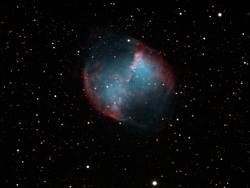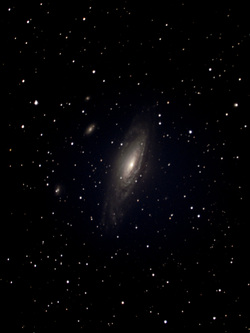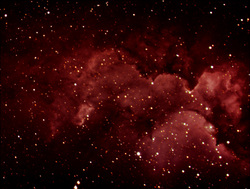Deep Sky Imaging
Deep Sky Object Imaging, or DSO imaging as it is often called, is probably the most challenging type of astrophotography there is. To do it right requires use of specialized hardware such as a DSLR or CCD camera, specialized software, a lot of precision, a little artistic ability, a boatload of money, and a ton of patience. Most of us don't have all those things, so we make do with the tools we have and whatever we can afford to invest in the hobby.
Back in the late 90's, I purchased a Meade Pictor 216XT monochrome CCD camera. This was one of the first "affordable" amateur cameras on the market. It had a tiny CCD chip. It was an experiment to see if the hardware and software had advanced enough to make this a viable interest for me. I captured a lot of "things" with that camera, but never a single image that I was happy enough to share. Experiment complete --- I needed to wait for the hardware to advance and mature a little more, not to mention come down in price dramatically.
Jump forward to 2014. After a year of researching and debating, I finally decided to take take the plunge and purchase a decent DSO camera. The camera that I believe offered the best balance for my skill set and wallet was the SBIG STF-8300M monochrome CCD camera. I also purchased the FW-8 filter wheel, a set of LRGB, Ha, S2, and O3 filters, the OAG-8300 off-axis guider, and an ST-i guiding camera. While not an ideal match for my telescope, the camera is very flexible and should provide me many years of satisfaction.
I'm just learning how to use this setup and only have a few photos to share at this point. They aren't very good, but as any amateur will tell you, you're always proud of your "first light" images.
Back in the late 90's, I purchased a Meade Pictor 216XT monochrome CCD camera. This was one of the first "affordable" amateur cameras on the market. It had a tiny CCD chip. It was an experiment to see if the hardware and software had advanced enough to make this a viable interest for me. I captured a lot of "things" with that camera, but never a single image that I was happy enough to share. Experiment complete --- I needed to wait for the hardware to advance and mature a little more, not to mention come down in price dramatically.
Jump forward to 2014. After a year of researching and debating, I finally decided to take take the plunge and purchase a decent DSO camera. The camera that I believe offered the best balance for my skill set and wallet was the SBIG STF-8300M monochrome CCD camera. I also purchased the FW-8 filter wheel, a set of LRGB, Ha, S2, and O3 filters, the OAG-8300 off-axis guider, and an ST-i guiding camera. While not an ideal match for my telescope, the camera is very flexible and should provide me many years of satisfaction.
I'm just learning how to use this setup and only have a few photos to share at this point. They aren't very good, but as any amateur will tell you, you're always proud of your "first light" images.




